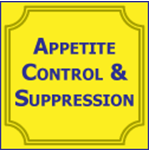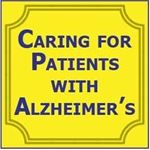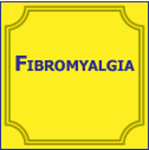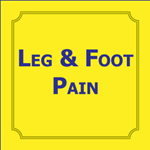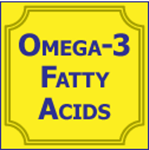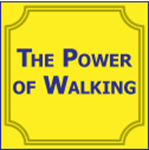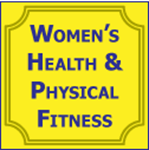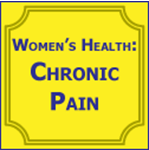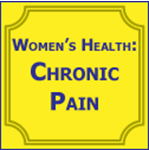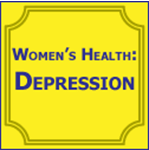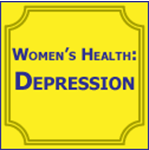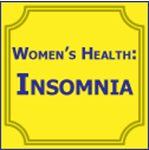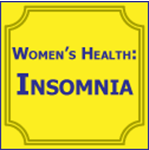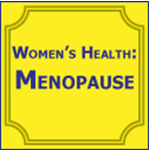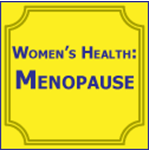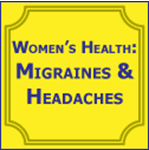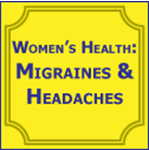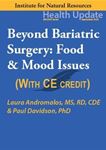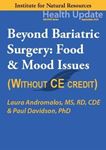You have no items in your shopping cart.
Women's Health
Filter by price
Appetite Control & Suppression
Describes how appetite is normally regulated. Cites how appetite can become dysregulated and contribute to weight gain and obesity. Describes a range of factors that can influence appetite control. Identifies lifestyle interventions that can be used to regain appetite control. Identifies the role of appetitesuppressing medications.
$30.00
Caring for Patients with Alzheimer’s
Lists methods to assist patients with memory and communication problems. Lists strategies to assist patients with mood and behavioral problems. Identifies strategies to assist patients with physical and personal hygiene problems. Identifies approaches to mealtime and nutritional health. Identifies strategies for handling exercise, socializing, and other activities. Discusses when and how to consider alternative living arrangements including respite care. Describes the legal and financial concerns that need to be addressed.
$30.00
Fibromyalgia
Identifies the issues in the pathogenesis of fibromyalgia as well as controversies regarding the clinical presentations of this condition. Reviews the differential diagnosis of fibromyalgia, including differentiation from myofascial pain syndromes, chronic fatigue syndrome (CFS), irritable bowel syndrome, and other conditions. Identifies treatment regimens and management options for fibromyalgia, including “integrative” treatments (exercise and herbal and over-the-counter remedies). Explains to patients the role of sleep disorders in the pathogenesis of fibromyalgia and in the clinical management of this condition.
$30.00
Hair & Nails
Describes the patterns and causes of alopecia and hirsutism. Discusses the evaluation and possible treatments for hair loss and hirsutism. Describes changes in nail color, shape, and texture that indicate underlying illness. Lists medications which can cause hair or nail abnormalities. Discusses practical strategies for maintaining healthy hair and nails.
$30.00
Leg & Foot Pain
Describes how leg and foot pathologies can impair functional ability. Describes the role of different disciplines in the diagnosis
and treatment of leg and foot pathologies. Outlines evidence-based interventions for each condition. Identifies risk factors for each leg/foot condition. Identifies how this course will impact his/her current practice and interaction with patients, clients, and families.
$30.00
Omega-3 Fatty Acids
Identifies essential fatty acids and their metabolites, including eicosanoids, and the beneficial role fatty acids play in maintaining health. Describes clinical implications of omega-3 fatty acid deficiency and issues surrounding supplementation with these compounds. Discusses possible clinical benefits of supplementation with omega-3 fatty acids for various conditions, including neurologic, cardiovascular and immunologic pathology. Identifies issues related to mercury contamination of food sources, including fish and other seafood, and proper dietary recommendations for various categories of patients, including pregnant women, patients with essential fatty acid deficiencies, and patients with neurologic concerns.
$30.00
Skin Care, Allergies, & Wrinkles
Explains the diagnosis and newest treatments for skin conditions and skin allergies. Describes new laser treatments for wrinkles and other skin conditions. Lists the most effective preventive and treatment methods for skin cancer. Identifies coping strategies for patients with psychosocial issues caused by chronic skin conditions. Identifies future trends in medical and cosmetic skin treatments.
$30.00
Skin Care, Allergies, & Wrinkles - Ebooklet
Explains the diagnosis and newest treatments for skin conditions and skin allergies. Describes new laser treatments for wrinkles and other skin conditions. Lists the most effective preventive and treatment methods for skin cancer. Identifies coping strategies for patients with psychosocial issues caused by chronic skin conditions. Identifies future trends in medical and cosmetic skin treatments.
$25.00
Sugar, Salt, & Fat - 2nd edition
This home-study course outlines the various factors that make foods palatable. It provides evidence that the "hyperpalatability" of our current food supply is undermining our normal satiety signals, motivating the drive to eat even when there is no physiologic need for food. This course presents evidence that repeated exposure to high quantities of palatable foods (i.e., those high in sugar, fat and salt) can alter the brain in ways similar to drugs of abuse, essentially "rewiring" the brain to promote compulsive eating and loss of control over food.
$35.00
The Power of Walking
States the CDC’s, and the American College of Sports Medicine’s recommendations for daily physical activity for adults, children, and adolescents. Describes the health benefits of walking. Explains how walking can reduce the risk of various diseases, including diabetes, heart disease, cancer, depression, and dementia. Describes how walking can benefit children, adults, pregnant women, and the elderly. Identifies the physical, occupational, and other therapeutic benefits of walking. Outlines how to start and maintain a walking program.
$30.00
Women's Health & Physical Fitness
Identifies the benefits of regular exercise and fitness at all stages of life. Describes the current physical activity guidelines for healthy American adults, focusing on those specifically applicable to women. Explains the components of a good physical activity program and why each one is important for a woman’s health. Describes the fitness requirements for women during pregnancy and after menopause.
$30.00
Women's Health: Chronic Pain
Describes the difference between chronic and acute pain. Identifies the symptoms of and treatments for chronic pain conditions affecting women. Discusses the role of home remedies, relaxation techniques, and other non-drug therapies for treating chronic pain. Explains the psychosocial aspects of treating chronic pain. Describes how to manage use of pain medications, including opioids, to ensure patient safety.
$30.00
Women's Health: Chronic Pain - Ebooklet
Describes the difference between chronic and acute pain. Identifies the symptoms of and treatments for chronic pain conditions affecting women. Discusses the role of home remedies, relaxation techniques, and other non-drug therapies for treating chronic pain. Explains the psychosocial aspects of treating chronic pain. Describes how to manage use of pain medications, including opioids, to ensure patient safety.
$25.00
Women's Health: Depression
Identifies the most prevalent forms of depression. Identifies the symptoms of depression and mania. Identifies the differences in presentation across age groups and sexes. Compares the theories of depression. Reviews depression treatment modalities.
$30.00
Women's Health: Depression - Ebooklet
Identifies the most prevalent forms of depression. Identifies the symptoms of depression and mania. Identifies the differences in presentation across age groups and sexes. Compares the theories of depression. Reviews depression treatment modalities.
$25.00
Women's Health: Insomnia
Discusses the physiology of sleep. Describes healthy sleep patterns. Identifies the different types of insomnia. Discusses women’s sleep problems across their life cycle. Identify treatments for insomnia including optimal sleep hygiene, behavioral methods, and pharmaceuticals.
$30.00
Women's Health: Insomnia - Ebooklet
Discusses the physiology of sleep. Describes healthy sleep patterns. Identifies the different types of insomnia. Discusses women’s sleep problems across their life cycle. Identify treatments for insomnia including optimal sleep hygiene, behavioral methods, and pharmaceuticals.
$25.00
Women's Health: Menopause
Identifies the hormonal and neurologic changes that occur during menopause. Discusses the symptoms of perimenopause and menopause, as well as effective treatments, including medication and behavioral approaches. Describes the latest research on the benefits and risks of hormone replacement therapy, and identifies the conditions and symptoms for which HRT may be appropriate. Discusses the pros and cons of a variety of alternative remedies for menopausal insomnia, hot flashes, and depression, such as black cohosh and vitamin B supplements. Addresses recent developments in the prevention of chronic disease risk at menopause, including lifestyle changes and prophylactic medications.
$30.00
Women's Health: Menopause - Ebooklet
Identifies the hormonal and neurologic changes that occur during menopause. Discusses the symptoms of perimenopause and menopause, as well as effective treatments, including medication and behavioral approaches. Describes the latest research on the benefits and risks of hormone replacement therapy, and identifies the conditions and symptoms for which HRT may be appropriate. Discusses the pros and cons of a variety of alternative remedies for menopausal insomnia, hot flashes, and depression, such as black cohosh and vitamin B supplements. Addresses recent developments in the prevention of chronic disease risk at menopause, including lifestyle changes and prophylactic medications.
$25.00
Women's Health: Migraines & Headaches
Identifies the primary types of headache. Discusses the management of each type of headache. Identifies and discusses the management of headaches in women across chronological milestones.
$30.00
Women's Health: Migraines & Headaches - Ebooklet
Identifies the primary types of headache. Discusses the management of each type of headache. Identifies and discusses the management of headaches in women across chronological milestones.
$25.00
Beyond Bariatric Surgery - Streaming Video - 6 Hours (w/Home-study exam)
Describes the physiological and anatomical changes associated with bariatric surgery, endoscopic bariatric therapies, and fat-reducing procedures. Identifies the components of nutritional and psychological preoperative assessments for patients undergoing bariatric surgery. Describes pre-operative and post-operative nutrition guidelines for bariatric surgery patients.
4) identify mental, physical, and emotional challenges faced by pre-operative and post-operative bariatric surgery patients. Assesses and manage nutrition complications including constipation, diarrhea, dumping syndrome, reactive hypoglycemia, gout, and kidney stones in post-operative bariatric surgery patients. Applies strategies for running effective support groups for pre-operative and post-operative bariatric surgery patients. Identifies appropriate treatments for managing post-operative weight regain. Describes how the information in this course can be utilized to improve patient care and patient outcomes.
$83.00
Beyond Bariatric Surgery - Streaming Video only *NO CE - 6 Hours
Describes the physiological and anatomical changes associated with bariatric surgery, endoscopic bariatric therapies, and fat-reducing procedures. Identifies the components of nutritional and psychological preoperative assessments for patients undergoing bariatric surgery. Describes pre-operative and post-operative nutrition guidelines for bariatric surgery patients.
4) identify mental, physical, and emotional challenges faced by pre-operative and post-operative bariatric surgery patients. Assesses and manage nutrition complications including constipation, diarrhea, dumping syndrome, reactive hypoglycemia, gout, and kidney stones in post-operative bariatric surgery patients. Applies strategies for running effective support groups for pre-operative and post-operative bariatric surgery patients. Identifies appropriate treatments for managing post-operative weight regain. Describes how the information in this course can be utilized to improve patient care and patient outcomes.
$69.00

